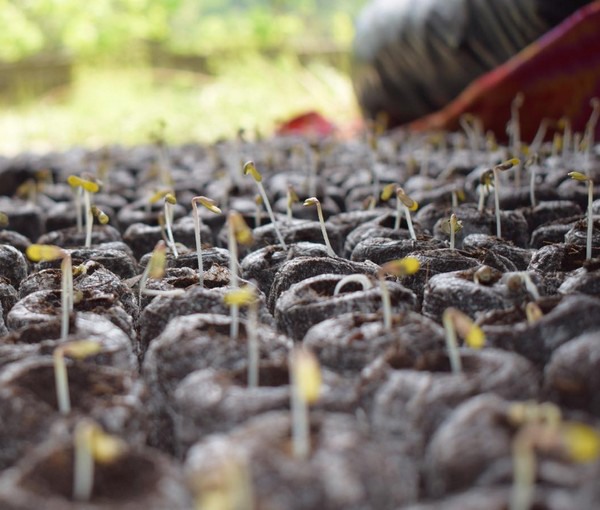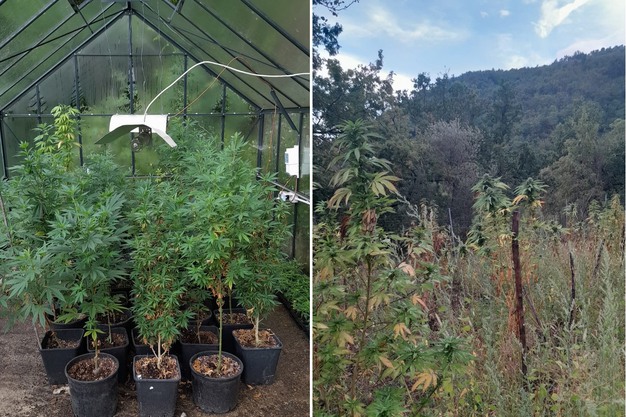Running a hemp farm in the scenic Moscia Valley of Londa, Italy, involves a careful balance of managing environmental conditions, responding to market demands, and dealing with the occasional wildlife intrusion. For one grower, this daily juggling act is all part of the job.
Flexible approach
The setup of Azienda Agricola Vamperti is a blend of outdoor cultivation and a small-scale indoor operation. Most of the cultivation happens outdoors, taking full advantage of natural sunlight. However, there's also a greenhouse for mother plants and germination, and an indoor facility that is used intermittently based on market needs. "For half the year, the indoor setup isn't really used—it all depends on what the market dictates," Teodoro Carbone from Azienda Agricola Vamperti explains. This flexible approach helps manage costs, especially when energy prices are high, he explains.

The indoor setup is straightforward: HPS lamps, soil-filled pots, drip irrigation, and climate control. Although Teodoro once relied heavily on grow boxes, he has now transitioned to using three separate rooms for cultivation. Solid fertilizers are his choice, both for simplicity and cost-effectiveness. "No one notices the difference, and frankly, neither do I," he says, reflecting on the minimal impact of this on the final product.
Growing hemp flowers in this isolated valley brings its own set of challenges. The winter months are particularly difficult, with temperatures often dropping too low for optimal plant growth. While the greenhouse helps, the persistent cold means that growth can potentially slow down. Yet, by carefully timing the cycles, Teodoro ensures that by mid-March, the plants are ready to grow, leading to successful cloning in May.
Caterpillars, badgers and wild plants
Wildlife is another challenge, with deer, badgers, mites, and caterpillars each taking their turn at threatening the crop. "Deer have been the most problematic," he says. "Followed by badgers, mites, and caterpillars. To combat these, I use a mix of traditional methods and natural solutions." Neem oil is applied during the vegetative stage, while Bacillus thuringiensis, a bacterium that targets caterpillars, is used during flowering. "It's effective and doesn't harm the plants," he says.

The grower also encourages other plants to grow around the hemp, creating a natural barrier that confuses pests and draws them away from the valuable crop. "With enough other plants around, the animals don't target the hemp," he explains. This strategy, combined with a well-managed drip irrigation system, also helps deter badgers. By allowing non-hemp plants to thrive in certain areas, he gives the badgers a more appealing target, keeping them away from the main crop. His irrigation system plays a crucial role too. Badgers, for instance, are drawn to the wet soil around the plants, but by allowing non-hemp plants to grow around the irrigated areas, the badgers target these instead. It's all about giving the animals an easier, more tempting alternative to the valuable hemp plants. "Badgers love a good dig, but if there are other plants nearby, they'll go for those." Wild plants also need to be irrigated, not only because badgers would aim for the cannabis plants anyway, but also to allow insects to lay their eggs there rather than on the grower's precious plants.
Market fluctuations and regulatory challenges
Market conditions have their own influence on the farm's operations. Demand fluctuates, affecting how often the indoor facility is used, for instance. However, not every grower adapted like Teodoro did. Over the years, many growers have left the industry after realizing that the hoped-for legalization of THC-rich cannabis wasn't on the horizon. "A lot of people jumped in hoping the market would expand, but it didn't," he notes. The initial buzz around cannabis legalization brought many newcomers into the industry. However, when THC-rich cannabis legalization didn't materialize, many left the field. "Those who were losing money gave up," he explains. "It's not like tobacco—you have to really know your market, and mine is mainly older folks seeking CBD oil for ailments, and people with sick pets."

Recent legal developments have added a layer of uncertainty to the industry. An amendment to the security bill has sparked concerns, as it would outright ban the entire sector, while actually still allowing hemp flowers from being imported from other EU countries. This strikes the grower as inconsistent with EU regulations. "You can't just override EU regulations like that," he points out, reflecting the broader frustration within the industry.
Despite these challenges, the grower continues to adapt, using practical solutions and a deep understanding of his environment to keep his farm running smoothly. While the road isn't always easy, it's clear that this approach is working well enough for him to stay on course, one season at a time.
For more information:
Azienda Agricola Vamperti
vamperti-azienda-agricola.site
